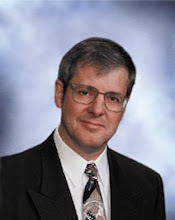The complete filing can be reviewed at :http://www.crtc.gc.ca/PartVII/eng/2008/8622/t114_200809403.htm
The CRTC is expected to make a decision on this before December 31, 2008. This decision will impact the availablity of copper based broadband services in all rural communities.
My objective for this post is not to take a position, but rather educate the rural community on the impact this decision will have on their communities.
In order to understand the CRTC's decision, it will be necessary for the reader to understand the following:1. Technical Issues
2. CRTC's Mandate
3. Requlatory Issues
For this reason, I have separated this post in three parts:
Part 1: Technical Issues (November 30, 2008)
Part 2: CRTC Mandate and Requlatory Issues (December 8, 2008)
Part 3: The CRTC's Decision (December 31, 2008)
Part 1: Technical Issues
The Telecommunication industry originally installed copper access to support Plain Old Telephone Service (POTS). A separate copper pair was installed between the service provider's central office and each residence or business.
Ideally the service provider would build a central office in each area of the city or rural community. The central office would be strategically placed to ensure that all of the subscriber premises were within 18,000ft or 5.5Km from the central office. As example, Edmonton Telephones placed central offices in Norwood, Lendrum, Oliver, Millwoods, Westmount, Jasper Place, Strathcona, Londonderry, and downtown. So at one time the local access network was comprised of a single copper pair going from the central office to the premises. This access architecture has been evolving due to a couple of restraints: Developers were building subdivisions outside the 5.5Km distance limitation and businesses wanted to have more than one phone line. So the service providers began to install Digital Loop Carriers (DLCs). The DLC was strategically placed in an area or neighbourhood and the copper wire was installed between the DLC and the premises. The service provider then backhauled the voice traffic to the central office. This resolved a couple of issues: Voice services could now be provided to subscribers outside the 5.5Km limitation and the service provider no longer needed to run a separate copper pair to each premises.
The DLCs have since been replaced with DSLAMs (Digital Subscriber Line Access Multiplexer). The DSLAMs are strategically placed no greater than 3Km from the subscriber's premises. DSLAMs allow a service provider to provision different DSL (Digital Subscriber Line) services from the DSLAM to the premises. Broadband services such as ADSL, ADSL2+, SDSL, and VDSL. The traffic from each of the premises is then aggregated at the DSLAM and backhauled to the central office using fiber.
The Internet Centre filing implies that there is a single copper pair going from the central office to the premises. This is generally not the case in major metropolitan areas such as Edmonton and Calgary. But in most Alberta rural communities a central office was strategically placed so that all the subscribers were within the original 5.5Km distance limitation. There may or may not be either DLC or DSLAMs installed in some rural communities.
What are Voice Coils?
If a subscriber is outside the 5.5Km distance limitation then the service provider could extend the distance by installing voice coils. These coils allowed the service provider to support voice services up to 10Km from the central office to rural farms and communities. Voice coils are completely incompatible with the higher frequencies required for DSL services. The Internet Centre claims that TELUS is installing these loading coils even if the subscriber is less than 5.5Km prohibiting them from providing DSL services to the community.
Conditions That Must be Met
For the Internet Centre to provide DSL services to rural communities the following conditions must be met:
1. A dry copper pair must exist between the customer's premises and the central office.
2. The Internet Centre must co-locate their DSL equipment in one of TELUS's central offices.
3. No voice coils between the central office and premises.
4. Customer premises no greater than 3Km in distance from a TELUS central office.
Stay TunedCRTC's Mandate and Regulatory Issues will be posted on December 8, 2008.


1 comment:
Alan - your overview is essentially correct, but the Internet Centre's filing suggests that the location of the DSLAM would be at the Alberta Supernet connection, not in Telus' CO. Tariffs already permit access to unfiltered unloaded copper loops if a Provider pays the huge amount of money required to colocate in the Telus wire centre (eg: $68 million insurance policy to colocate in each CO, to service for instance 20 customers in a small community).
The Internet Centre's filing asks the Commission to order Telus to put back the provision to acquire loops that go from, for instance, a customer premise THROUGH the CO or Telus street pedestal to the Supernet facility that is in every community in Alberta, in order to connect Albertans directly to Supernet.
In Ontario and Quebec and thoughout the U.S, Providers can order local loops and put on high speed modems using the shortest loop possible, meaning that not all loops have to go back to the CO - the neighborhood wire cabinet will work fine, even in Edmonton and Calgary.
Post a Comment